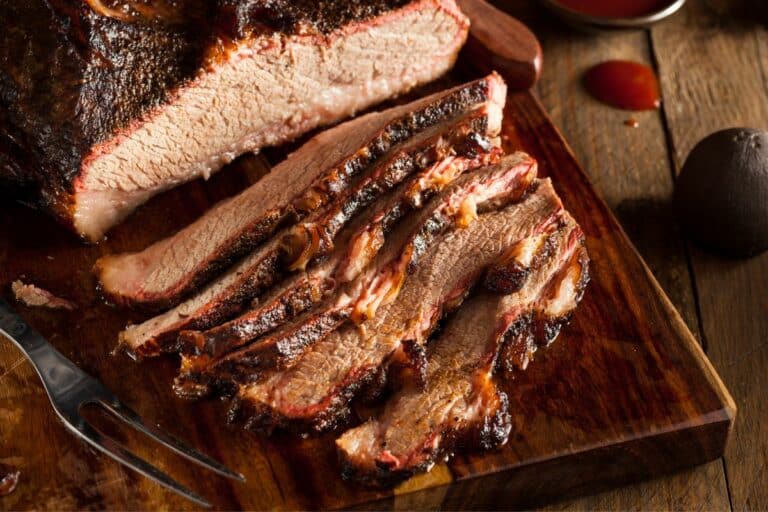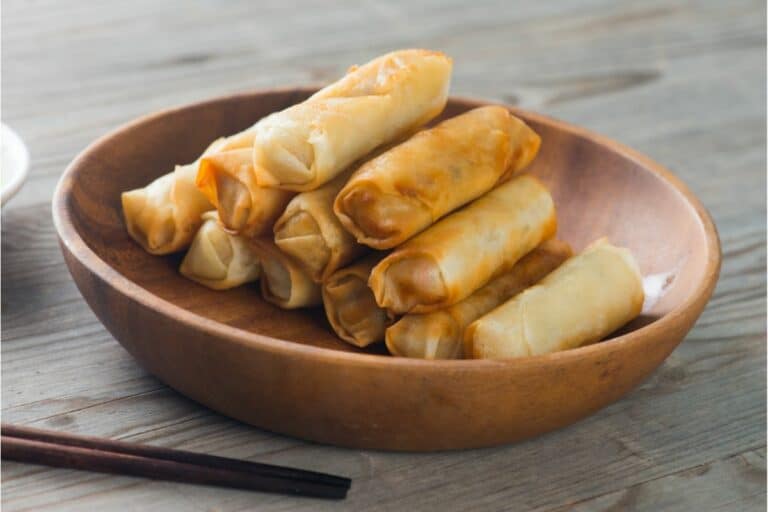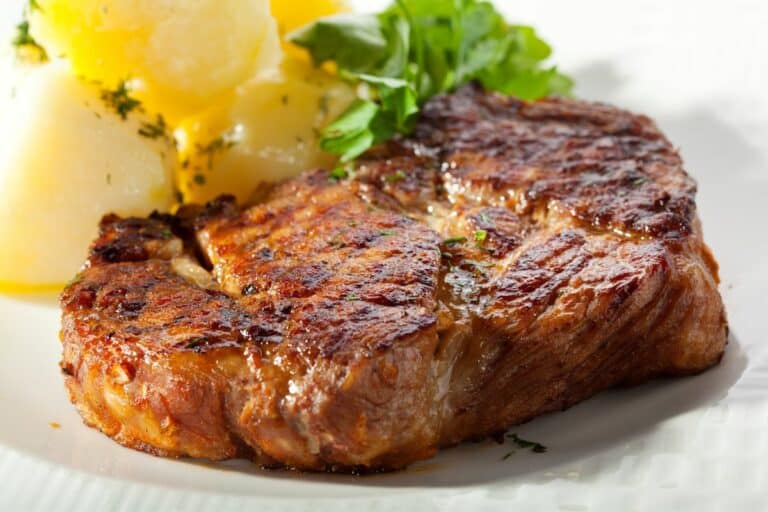15 Best Persimmon Recipes To Try Today
Affiliate & Video Credit Disclaimer: This article contains affiliate links and embedded videos from external creators. We provide full credit and links to original creators. The video below is from Cook Oishii Food Channel (1.49K subscribers). When you buy through links on our site, we may earn an affiliate commission at no extra cost to you. Learn more in our Affiliate Disclosure. This video is shared with proper attribution to support your learning about authentic persimmon bread recipes.
Autumn Harvest MasteryPersimmon Bread
Discover the complete guide to making persimmon bread with Oliver, Natalia, and Victor. Inspired by global culinary traditions, this authentic recipe combines 50+ countries of travel with family-tested techniques for home bakers and food enthusiasts.
Why Persimmon Bread Matters
Hello, bakers and food lovers! At Mangoes and Palm Trees, Oliver (hospitality veteran with 15+ years across 50+ countries), Natalia (Siberian-Italian culinary storyteller), and Victor (born November 24, 2016, Koh Samui, Thailand) bring you our comprehensive persimmon bread guide. This autumn classic represents one of the most underappreciated baking traditions, combining seasonal fruit abundance with sophisticated flavor development. This guide, rooted in our global travels and family testing, offers practical mastery for home bakers aged 25–55 seeking authentic, heritage-inspired recipes.
Persimmon bread represents the perfect marriage of natural sweetness, moist crumb structure, and warm spicing. According to Encyclopedia.com, persimmons have been cultivated for over 2,000 years in Asia, with American settlers adopting them enthusiastically in colonial times.
✓ About the Authors: Culinary Inspirationists & Travel Lovers

Oliver Mayerhoffer
Culinary Inspirationist & Travel Explorer
15+ years global hospitality experience across 50+ countries. Trained in Austrian culinary traditions. Lived and worked extensively in Mexico, Oman, India, Thailand, and Vietnam. Shares authentic global cuisine inspiring millions through family storytelling and travel discoveries.
Expertise: International hospitality, recipe development, culinary heritage

Natalia Mayerhoffer
Authentic Food Explorer & Recipe Curator
Expert in traditional and regional food customs from 50+ countries. Specializes in authentic ingredient sourcing and culinary heritage documentation. Co-creator of Mangoes & Palm Trees recipes, ensuring cultural authenticity in every dish.
Expertise: Recipe curation, ingredient authenticity, food traditions
Our Approach: Every article on Mangoes & Palm Trees is personally researched and tested by Oliver and Natalia using authentic techniques learned through 15+ years of global travel and cultural exploration across 50+ countries. We share culinary inspiration rooted in real experiences, family memories, and authentic food traditions.
What Is Persimmon Bread?
Persimmon bread is a traditional quick bread that showcases the natural sweetness and unique moisture-retaining properties of persimmons. Unlike fruit cakes loaded with dried fruits or quick breads relying on oil, authentic persimmon bread achieves its character from the fruit itself—creating a delicate crumb, subtle spicing, and lingering sweetness that distinguishes it from standard banana or zucchini breads.
The persimmon variety matters tremendously. American persimmons (Diospyros virginiana) deliver intense, concentrated flavor, while Japanese varieties (Diospyros kaki) offer more delicate sweetness. According to the USDA Crop Data, persimmons remain one of America’s most underutilized seasonal fruits, with peak availability from September through December.
Our Journey: Family Baking Adventures Across Continents
My first encounter with persimmon bread happened during my 15+ years in international hospitality. While managing upscale properties in Oman (ages 18–21), I discovered authentic Middle Eastern persimmon preparations that inspired deeper appreciation for this fruit. Natalia’s Siberian-Italian heritage brought fermented fruit traditions, while Victor’s birth in tropical Koh Samui (2016) exposed him to global fruit varieties we’d explored during our Thailand years (2016–2018).
Our Vietnam kitchen (2022–present) became the testing ground for authentic persimmon bread recipes. We experimented with local fruit varieties, adjusting spicing and technique to honor traditional American recipes while incorporating Asian baking sensibilities. This cross-cultural development created a recipe that respects heritage while embracing global influence—precisely what Mangoes and Palm Trees represents.
History & Origins: From Ancient Asia to American Kitchens
The persimmon’s culinary journey spans millennia. Archaeological evidence suggests persimmon cultivation in China dating back over 2,000 years, with references in ancient Chinese texts celebrating its sweetness and medicinal properties. Japanese monks elevated persimmon cultivation to an art form, developing distinct varieties and preservation techniques including dried persimmons (hosigaki) that remain culinary treasures.
Native American persimmons (Diospyros virginiana) appear prominently in colonial American cooking. George Washington’s Mount Vernon documented persimmon bread recipes in 18th-century diaries. According to Monticello’s historical garden research, Thomas Jefferson cultivated persimmon trees, understanding their cultural significance. Persimmon bread evolved as a natural expression of American frontier baking—utilizing abundant seasonal fruit with resourceful kitchen techniques. This heritage inspires our modern interpretation.
Types of Persimmons for Baking
Understanding persimmon varieties is essential for successful bread baking. Each type contributes distinct characteristics:
American Persimmons
Intensely sweet, complex flavor. Smaller fruit (walnut-sized) requires careful ripeness timing. Must be completely soft to avoid astringency. Perfect for traditional recipes demanding pronounced persimmon character. Available September–November in specialty markets.
Fuyu Persimmons
Mild sweetness, firm texture. Larger fruit remaining edible when firm. Available year-round in most markets. Creates delicate, subtle-flavored bread. Victor’s preferred choice for consistent results.
Hachiya Persimmons
High-tannin when underripe, intensely sweet when ripe. Heart-shaped, large fruit. Must fully soften before baking. Delivers complex depth in persimmon bread.
For optimal results, use completely ripe persimmons—so soft they’re nearly liquid. Unripe persimmons contain tannins creating bitter, astringent flavors that ruin baking. Test ripeness by gentle finger pressure: properly ripe persimmons yield to light touch without resistance. According to Specialty Produce, this ripeness ensures maximum sweetness and proper moisture distribution during baking.
Classic Persimmon Bread Recipe
Yield: Two 9×5 inch loaves | Prep Time: 15 minutes | Bake Time: 60–70 minutes | Difficulty: Beginner to Intermediate
Ingredients
Dry Ingredients
- 2 cups (250g) all-purpose flour
- 1 teaspoon baking soda
- 1 teaspoon baking powder
- ½ teaspoon salt
- 1½ teaspoons ground cinnamon
- ½ teaspoon ground nutmeg
- ¼ teaspoon ground cloves
- ¼ teaspoon ground ginger
Wet Ingredients
- 1 cup (240ml) persimmon pulp (about 2–3 ripe persimmons)
- ⅔ cup (160ml) vegetable or coconut oil
- 1 cup (200g) granulated sugar
- 2 large eggs, room temperature
- 1 teaspoon vanilla extract
Optional Mix-Ins
- ¾ cup chopped walnuts or pecans
- ½ cup dried cranberries or raisins
Preparation Instructions
Step 1: Prepare Persimmon Pulp
Cut ripe persimmons in half, scoop flesh into a food processor, and blend until completely smooth. Strain through fine-mesh sieve to remove any fibers. Measure exactly 1 cup pulp. This step ensures consistent moisture and smooth texture throughout your bread.
Step 2: Preheat & Prepare Pans
Preheat oven to 350°F (175°C). Grease two 9×5 inch loaf pans with butter or cooking spray. Line bottoms with parchment paper for easy removal. This prevents sticking and ensures beautiful presentation.
Step 3: Mix Dry Ingredients
In large bowl, whisk together flour, baking soda, baking powder, salt, cinnamon, nutmeg, cloves, and ginger. Set aside. Proper whisking aerates flour and distributes leavening agents evenly.
Step 4: Combine Wet Ingredients
In separate bowl, whisk together persimmon pulp, oil, sugar, eggs, and vanilla until well combined. Mix gently—don’t over-whisk, as this develops gluten creating tough crumb. Aim for smooth, homogeneous texture.
Step 5: Combine Wet & Dry
Pour wet ingredients into dry ingredients. Using wooden spoon or silicone spatula, fold together just until combined—do not overmix. A few small lumps are acceptable and preferable to overdeveloped gluten. Fold in nuts or dried fruit if using.
Step 6: Fill Pans
Divide batter evenly between prepared pans. Smooth tops gently with spatula. Fill pans approximately ⅔ full, leaving room for rise.
Step 7: Bake
Bake at 350°F for 60–70 minutes, until toothpick inserted in center comes out clean or with just a few moist crumbs. Bread should be deep golden brown. If edges brown too quickly, tent loosely with foil during final 15–20 minutes.
Step 8: Cool
Cool in pans for 15 minutes. Turn out onto wire racks and cool completely (at least 2 hours) before slicing. Complete cooling allows structure to set, preventing crumbly texture when cutting.
💡 Pro Tip: Store cooled persimmon bread wrapped in plastic wrap at room temperature for up to 3 days, or freeze for up to 3 months. Many bakers find persimmon bread improves slightly after 1–2 days as flavors meld and crumb structure settles.
Expert Video: How to Make the Best Persimmon Bread
📹 Video Credit: The following video is from Cook Oishii Food (1.49K subscribers), a dedicated channel showcasing authentic food preparation techniques. We embed this video with full transparency and attribution to provide expert guidance on making persimmon bread. Follow their channel for more culinary inspiration and detailed cooking demonstrations.
Video Summary: This expertly-produced tutorial demonstrates proper persimmon selection, pulping techniques, ingredient measurements, mixing methods, and baking procedures from start to finish. Cook Oishii Food provides detailed visual guidance ensuring your persimmon bread succeeds on first attempt.
💡 Key Takeaway: Professional persimmon bread baking combines precise ingredient measurement, careful mixing technique to avoid overdevelopment, and proper oven temperature control. This video demonstrates exactly why these details matter for perfect results every time.
Video Credit: Cook Oishii Food YouTube Channel | Attribution: Global Food Cooking Techniques
Health Benefits of Persimmons in Baking
Beyond culinary appeal, persimmons offer legitimate nutritional benefits backed by scientific research:
- Rich in Antioxidants: Persimmons contain flavonoids and phenolic acids fighting inflammation and oxidative stress. According to research published in Nutrients journal, persimmons rank among top fruit sources for antioxidant capacity.
- Fiber Support: Persimmons provide soluble and insoluble fiber supporting digestive health. One medium persimmon delivers approximately 6g of dietary fiber.
- Natural Vitamins: Rich in vitamin A (supporting vision and immunity), vitamin C (immune support), and B vitamins (energy metabolism).
- Heart Health: Potassium content supports healthy blood pressure regulation, while phenols may improve cholesterol profiles.
- Low Glycemic Alternative: Despite natural sweetness, persimmons have moderate glycemic impact when consumed as part of whole bread (versus isolated sugar).
Victor’s growing enthusiasm for persimmon bread demonstrates that health-promoting ingredients can be genuinely delicious. Using persimmon bread as your fruit serving creates nutritious, satisfying breakfast or snack option within balanced diet.
Persimmon Bread Troubleshooting Guide
Even experienced bakers encounter challenges. Here’s how to diagnose and prevent common persimmon bread issues:
❌ Problem: Bread is too dense or heavy
Causes: Overmixing develops gluten creating tough structure. Overripe persimmons (too liquid) throwing off flour ratio. Insufficient leavening from old baking soda/powder.
Solutions: Mix only until ingredients combine. Use completely ripe but not liquified persimmons. Measure persimmon pulp carefully. Check leavening agent expiration dates. Ensure oven temperature accuracy with thermometer.
❌ Problem: Bread is dry
Causes: Overbaking past center doneness. Insufficient oil in recipe. Underripe persimmons with less moisture.
Solutions: Check doneness at 60 minutes; don’t overbake. Use full amount of oil specified. Store finished bread tightly wrapped to retain moisture. Once cooled, persimmon bread improves slightly as moisture redistributes.
❌ Problem: Bread sinks in middle
Causes: Oven temperature too high causing quick crust formation while interior remains underbaked. Insufficient structure from undermixing. Too much liquid.
Solutions: Verify oven temperature with dedicated thermometer. Mix until ingredients just combine—slightly better than undermixed. Measure persimmon pulp precisely. Start checking doneness at 60-minute mark.
Frequently Asked Questions About Persimmon Bread
Insights from 15+ years in global hospitality and 50+ countries of culinary exploration
Can I use underripe persimmons for bread?
Absolutely not. Underripe persimmons contain high tannin levels creating astringent, bitter flavors that ruin baking. Always use completely soft, ripe persimmons—ideally so soft they’re almost jelly-like. Proper ripeness ensures maximum sweetness and moisture. Test ripeness by gentle finger pressure. (Specialty Produce)
Can I freeze persimmon bread?
Yes, persimmon bread freezes beautifully for up to 3 months. Cool completely, wrap tightly in plastic wrap, then place in airtight freezer bag removing excess air. Thaw at room temperature for 2–3 hours before serving. Many bakers find frozen-then-thawed persimmon bread develops even deeper flavor as it ages.
What’s the difference between American and Japanese persimmons?
American persimmons (Diospyros virginiana) deliver intensely concentrated sweetness with complex tannin notes when fully ripe. Japanese varieties like Fuyu are milder, available year-round, and remain firm when ripe. For traditional persimmon bread, American varieties create more authentic character, though Japanese varieties work wonderfully for gentler flavor. (Encyclopedia.com)
Can I substitute oil with butter in persimmon bread?
Yes. Use equal weight of melted butter replacing vegetable oil (⅔ cup oil = approximately 150g melted butter). Butter creates slightly denser crumb with richer flavor. Oil produces lighter, more tender texture. Both methods work; choose based on desired crumb profile.
How long does persimmon bread last at room temperature?
Properly stored persimmon bread lasts 3–4 days at room temperature in airtight container or wrapped in plastic wrap. Keep away from direct sunlight and warm areas. For longer storage, refrigerate up to one week or freeze for 3 months. Many bakers appreciate flavor development during first 1–2 days after baking.
Can I make persimmon bread gluten-free?
Yes. Replace all-purpose flour with gluten-free 1:1 baking flour (King Arthur or Bob’s Red Mill brands work well). May require slightly more baking powder (add ¼ teaspoon) and slightly reduced liquid to compensate for gluten-free flour’s different hydration. Test first loaf to verify texture, then adjust as needed. Crumb will be slightly different but equally delicious.
What spices work best with persimmon bread?
Traditional spicing combines cinnamon (dominant), nutmeg, cloves, and ginger creating warm autumn character. Some bakers add cardamom, allspice, or mace for complexity. Our recipe uses classic combination, but feel free experimenting with your preferred spice profile. Start with our measurements, then adjust future batches based on taste preferences.
Why is my persimmon bread gummy?
Gumminess usually indicates underbaking. Check doneness with toothpick inserted into bread’s center—it should emerge clean or with just a few moist crumbs. Bake additional 5–10 minutes if center is still underbaked. Ensure oven temperature is accurate using dedicated thermometer. After cooling, slice only when completely cool (at least 2 hours).
Conclusion: Mastering Persimmon Bread Heritage
Persimmon bread represents one of autumn’s greatest culinary treasures—a simple yet sophisticated quick bread celebrating seasonal abundance with elegant technique. This guide, informed by 15+ years of international hospitality expertise across 50+ countries, combines heritage traditions with practical mastery ensuring your success from first attempt.
Whether you’re baking for family gatherings, exploring seasonal cooking, or seeking authentic heritage recipes, persimmon bread delivers satisfaction and culinary joy. The key lies in respecting the fruit itself—using only perfectly ripe persimmons, following proven techniques, and understanding the science behind each step. Your next batch of persimmon bread awaits!
Happy baking, and may your persimmon bread bring warmth and joy to your autumn kitchen!







